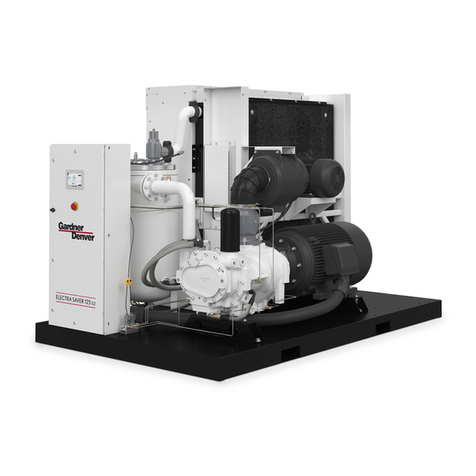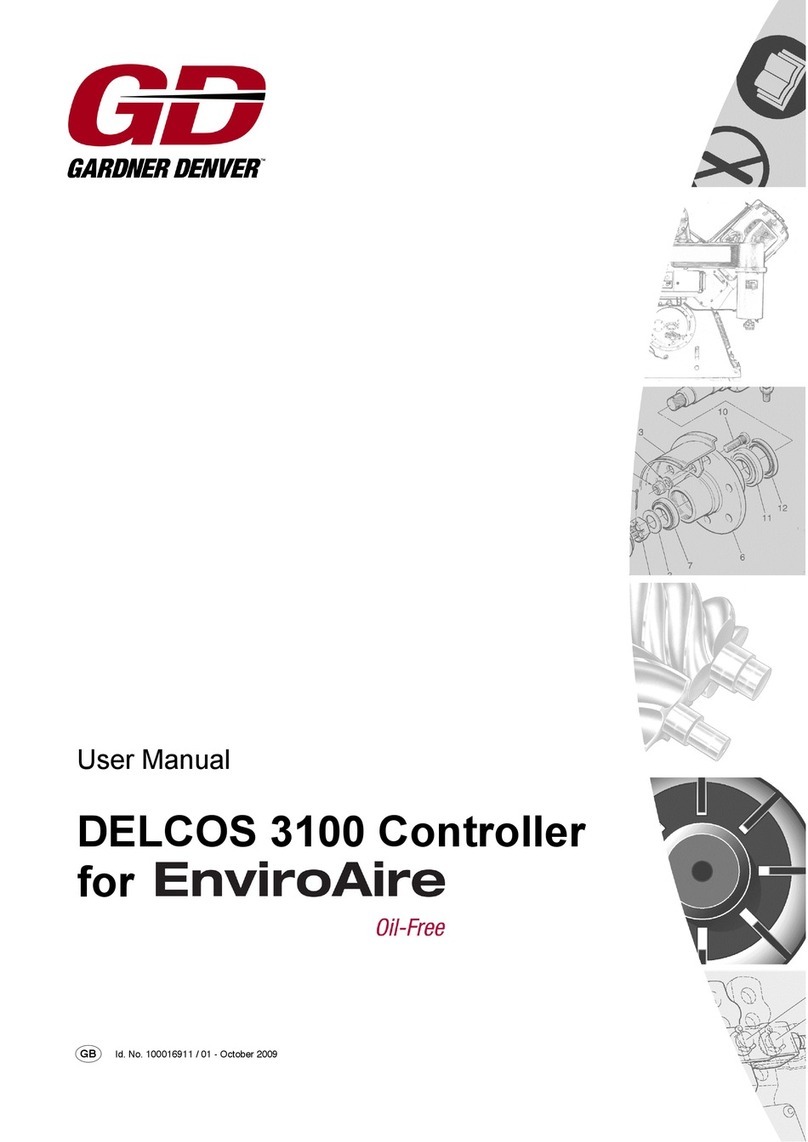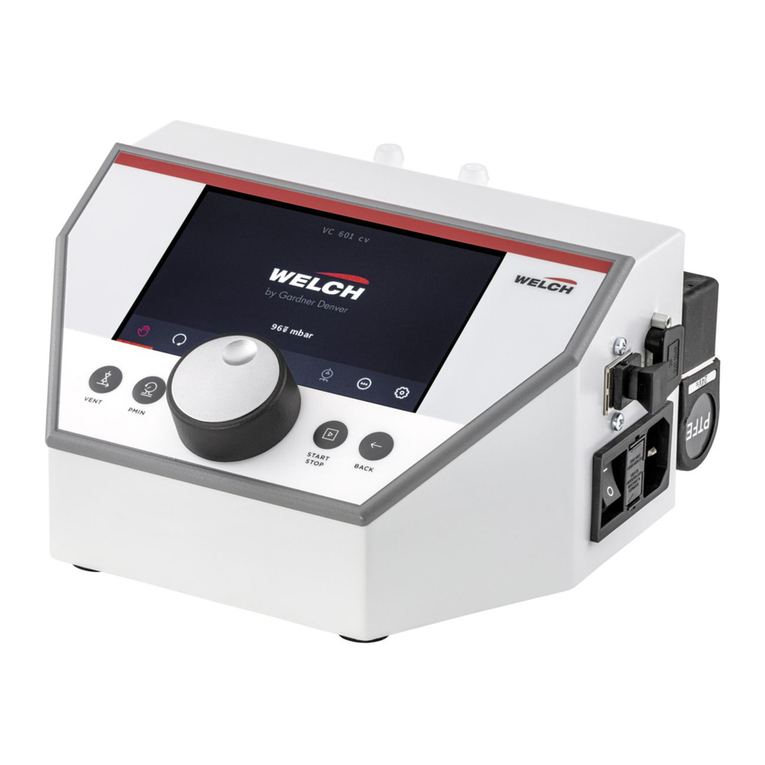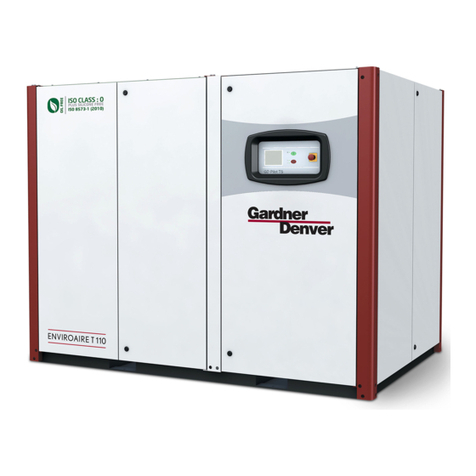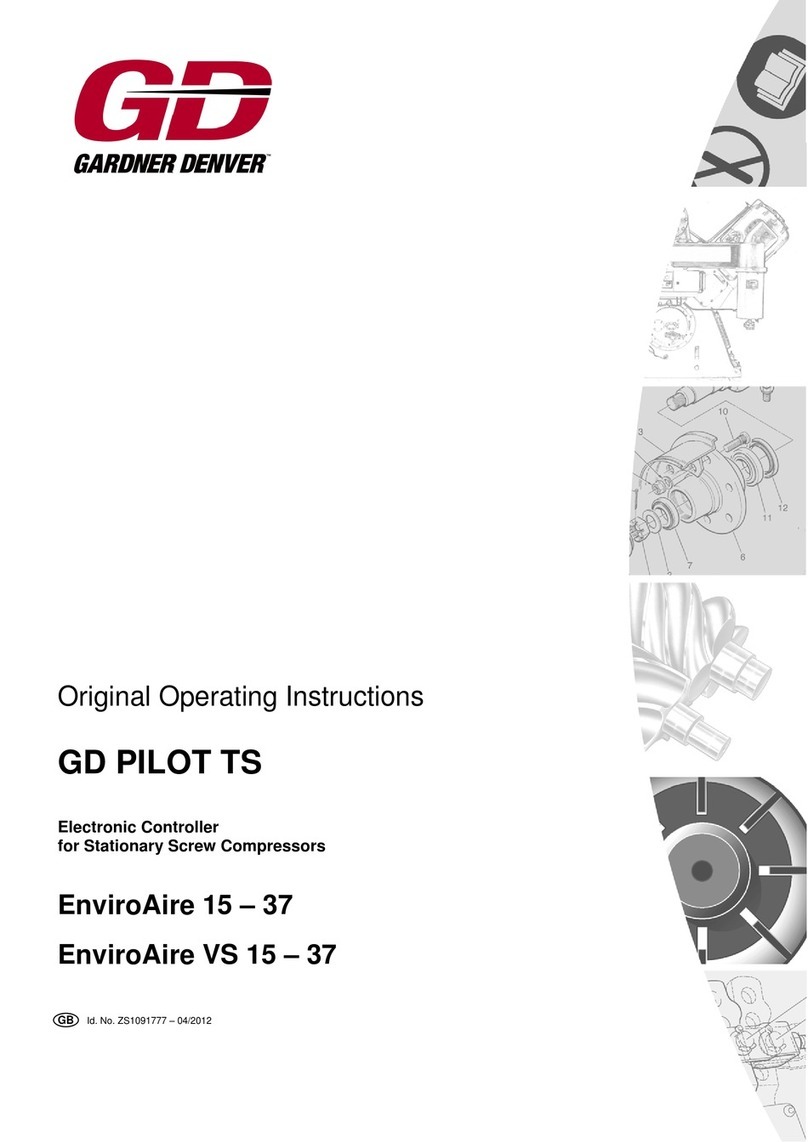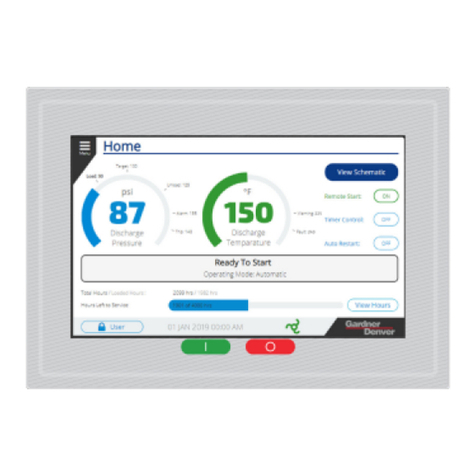
Page 7
13-17-625 v00
1. General Information
Compressor sequencing refers to the intelligent control of system consisting of multiple compressors to
provide a single compressed air supply. This is done to optimize energy efficiency, pressure control, and
maintenance schedules of the system.
The Gardner Denver Governor™ controller is capable of communicating with several different generations
of Gardner Denver controls to allow multi-machine sequencing of new and existing Gardner Denver
equipment. Depending on the protocol selected, up to 4 or 8 machines may be sequenced on a single
installation without the use of a master controller.
This manual describes the requirements, configuration / installation, and operation of compressors under
sequencing control with the Gardner Denver Governor™ controller. Note: All Governor Controller
screenshots in this manual are for the 7” screen, however the 4.3” screens and settings are very similar
and are located in the same location in the menus.
The following requirements must be met to ensure proper operation of the system.
1.1 System Design
In order for the system to be sequenced reliably, all compressors must be connected to an air
storage system with minimal pressure differential between machines and adequate storage for the
system. The machines must also be selected to work in a coordinated manner based on the demand
profile. If these requirements are not met, the system may not be able to adequately meet the
customer’s requirements.
A proper sequencing installation requires two or more Gardner Denver rotary air compressors with
supported controllers, piped into a common air system, interconnected as described above.
Connect the units directly to a common header and receiver, without any intervening dryers, filters,
or other restrictions. There should be no check valves or other devices which isolate a member from
the air system. During operation, be sure that any unit is taken out of the sequence mode before
closing its service valve.
The receiver should also be sized to prevent excessive drops or rapid rises in pressures during the
operation as described below. Note that "receiver" really applies to the entire storage volume of a
physical receiver and the volume of the air distribution throughout the plant. Modulating systems
work best when the receiver is at least one gallon for the rated CFM of a member compressor in the
system (the largest if they differ). Note that when demand exceeds the capacity of the running unit(s),
there will be a delay until the next unit starts and delivers additional air. The stored air serves the
plant during this period. With a properly sized receiver, pressure changes on a receiver gauge should
be very slow and gradual.
All standard practices common to sound air compressor installations such as proper sizing of piping,
proper electrical supply and conductor sizing, and grounding are to be observed. It is recommended
that the compressors are run in Automatic mode for at least one week to evaluate system
performance before activating sequencing.
1.2 Hardware
All of the supported sequencing protocols use an RS485 serial network for communications. RS485
is an industrial communications network that is suitable for robust communications in industrial
networks, but proper installation is still important to ensure reliability.
Gardner Denver provides kit number 317AUX6028 which includes all hardware required to add a
machine to a new or existing sequencing network. This includes cable glands, cable, and
components to add a system pressure sensor to the machine (utilized for the AirSmart protocol). If
the Gardner Denver-supplied kit is not used, it is important that the communications cable is 3-wire


